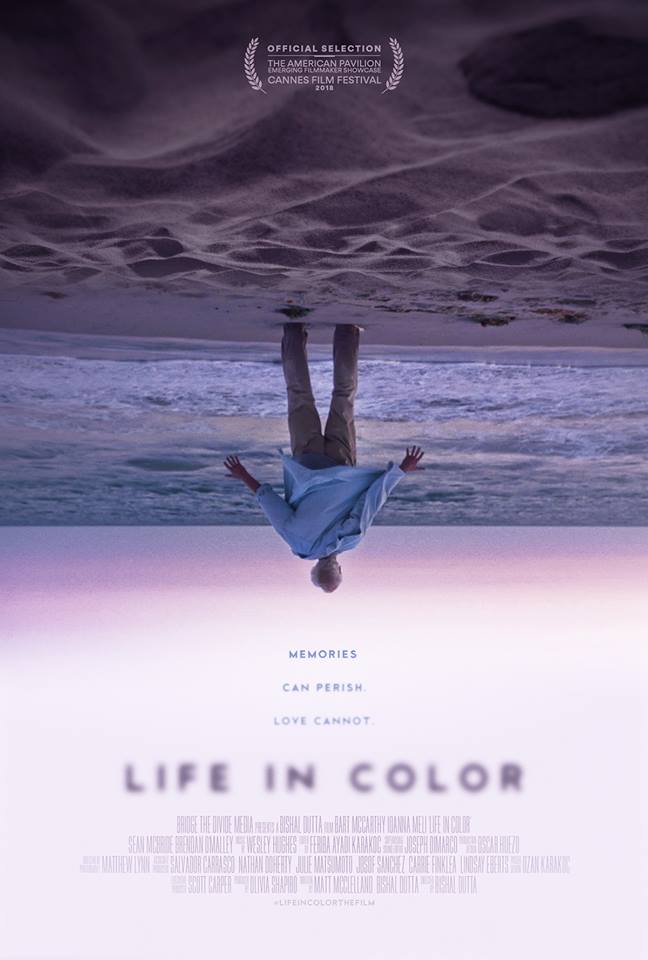This guest post comes to us from Natalia Saavedra Brychcy, a freelance sound designer based in Santa Cruz de la Sierra, Bolivia, working remotely for different studios in Los Angeles and New York City. Natalia has been a sound effects editor/sound designer for over 4 years, working on a wide array of projects from all over the world.

We’re in a big room, the lights are out, everybody is on their seats, and we start hearing the sound of waves and wind before the image comes onto the screen. Immediately, our state of mind changes, and we’re not only watching images and listening to sounds; we’re actually immersing into a story, into a narrative, into characters’ lives. We’re experiencinga film.
When most people go to the movie theater, they don’t think about how much work was put into the one-and-a-half or two-hour movie that they’re about to watch. But there’s a reason behind every single element that is presented to the audience; why the character grabbed that cup that way, the time of the day the scene was set up in, the type of clothes the characters are wearing, or the type of shot there is on each take. And these are only the elements that are seen on screen. But what about what we hear? Is the sound that we hear through the speakers just what was recorded on set? Are all the sounds we hear real? Does everything we see sound just like that in the day-to-day world? As sound designers, we all know that the best compliment is when the audience doesn’t acknowledge what we did, when they are not distracted by it. But, if their attention was caught by a sound, in a sense that works in favor of the story, it means that it has fulfilled its purpose. We’re not only referring to sounds that stand out because of dynamics, but also to moments that are silent or quiet. If every sound the audience hears is something natural and real to them, are we, as sound designers, helping to build believable characters through sound? Is sound a character itself?

I recently worked on a short film called ‘Life In Color’,about an aging closeted Alzheimer’s patient, who clashes against his strong willed daughter and struggles to hold on to the memory of his long lost lover. The movie deals with very complex themes and feelings. It’s all about emotion and the mental rollercoaster that Alzheimer is. Talking to the director, Bishal Dutta, we decided that we wanted this film to feel like an experience, like we’re going through what the main character is going through. We did not only want the audience to understand his struggles, we wanted them to feel them. We decided to approach this by building a constant in and out of memory narrative, going from reality to confusion, back to remembering, and having a smooth transition between each state, a flow instead of hard cuts between each scene. For me, as a sound designer, this was a chance to go beyond what we see on screen, to really make sound design tell the story of this character. What the movie needed for sound to do was to represent the character’s arc throughout it.
But, how do we approach this as sound designers? Is there a specific way it should be done? This made me think of other movies, which I remember made a great impact on me, and I started analyzing how sound embodies the characters’ arcs in them. For example,in ‘The Conversation’,Walter Murch uses sound design as a way to evoke paranoia in the main character, Harry, by using distortion and repetition of sounds the character is listening to, as well as different sound effects playing simultaneously to represent how his anxiety is developing throughout the film, and also the backgrounds help to show his loneliness. We know in what mental state Harry is in every scene, by what’s going on sonically. We listen through his ears to understand how he feels. Likewise, in the film ‘Drive’, we hear the sound as a representation of the character’s relationship to his environment and the people that surround him. The sound choices that were made by sound designer Lon Bender represent the mood and point of view of the Driver. The emotion was what guided the sound through the scenes, and not the accuracy to reality.
I noticed that, in these movies, sound transforms, just like the character. It has ups and downs, a dynamic that flows with the narrative. But all films approach this in a different way, some of them through the background/ambiences, others through Foley and the movement of the characters, or through textural tonalities or hard effects specifically edited to represent the psyche of the characters. The only thing that all of them have in common is that sound complements the emotions of the character, of what they’re going through and what they’re feeling.
One thing I’ve learned working on different types of projects and watching/studying a lot of films, is that there are nohard rules we have to go by, only guidelines that do exactly what the name says: they guide us. Experimenting is the key element to create sound design; what doesn’t work helps us get to what will, and we have to listen to what the film is telling us it needs. One of the amazing things that sound design can do is to give movement to what we see on screen, providing motion to a shot that is completely still, creating the sensation that time is still progressing and that the story is continuing. Sound can bring a sense of reality to the film, not by mimicking a perfect representation of the real world, but by providing truthfulness to the story and the characters, making it believable and creating empathy towards them.
As I started working on ‘Life In Color’, I thought about how the sound of memory would be, what the character was going through and especially what would represent this character. Since there was very little dialogue, sound was a key element to transmit all of this. It was a clear example of “show, not tell”. We chose to go with two main elements to showcase the character’s state of mind: water and wind. Throughout the film, we go in and out of the memory of the long lost lover, and the present time where he feels guilty and embarrassed of his feeling. Although the sound was specific to the character, the elements had to transform in time; the sound should behim. When he became angry, the elements had to be in sync with his thoughts; when he felt constrained, they had to be loud and overwhelming, when he was relaxed, we let the sound breathe by opening up space for other emotions, other tonalities, other thoughts. Although water and wind was heard throughout the film as a constant, they have something different to tell us every time. For example, for water, the waves of the ocean were a key transition, but we also used rain, water dripping from sinks or showers, to express what we wanted. They are related but they represent vastly different mental states.
After working on this I found out that always starting with a few questions before tackling any kind of project sonically helps a lot to create the tone of the film and to showcase the arc of the character.
- What is the story telling us?
- What does the character want and what are they conflicting with?
- How’s the personality of our character and what drives them to have the different emotions throughout the story?
- What elements represent the emotion of our characters?
- What is the relationship of the characters with their environment and the people within it?
- How does the character develop throughout the story? How did our character start, what changed them and how are they at the end of it?
- What is the trigger for each milestone and what makes them react?
- What is the tone we should start the story with and how do we represent this tone? Through backgrounds? Through the sound effects? Should it be punchier, grittier, smoother, have a soft approach, an in-your-face type of sound, or a combination of two or more?
I know that most of these questions refer to story and not to sound on its own, but at the end of the day that’s what it’s all about. Sometimes people think of sound designers as tech people, which is part of who we are, but there is so much more to our craft. Sound Design is an art form, it’s storytelling, it’s emotion. There is so much to be said by sound, infinite possibilities that we’re still exploring and are going to experiment. But what makes sound design thrive is not its “coolness” (although for us sound geeks, a cool sound will always put a smile on our face), it’s the emotion, the character, and the story that we can convey through it, that which you cannot see, but feel. The invisible part of it.
A big thank you to Natalia for her contribution to the site. You can learn more about her work at the following links…